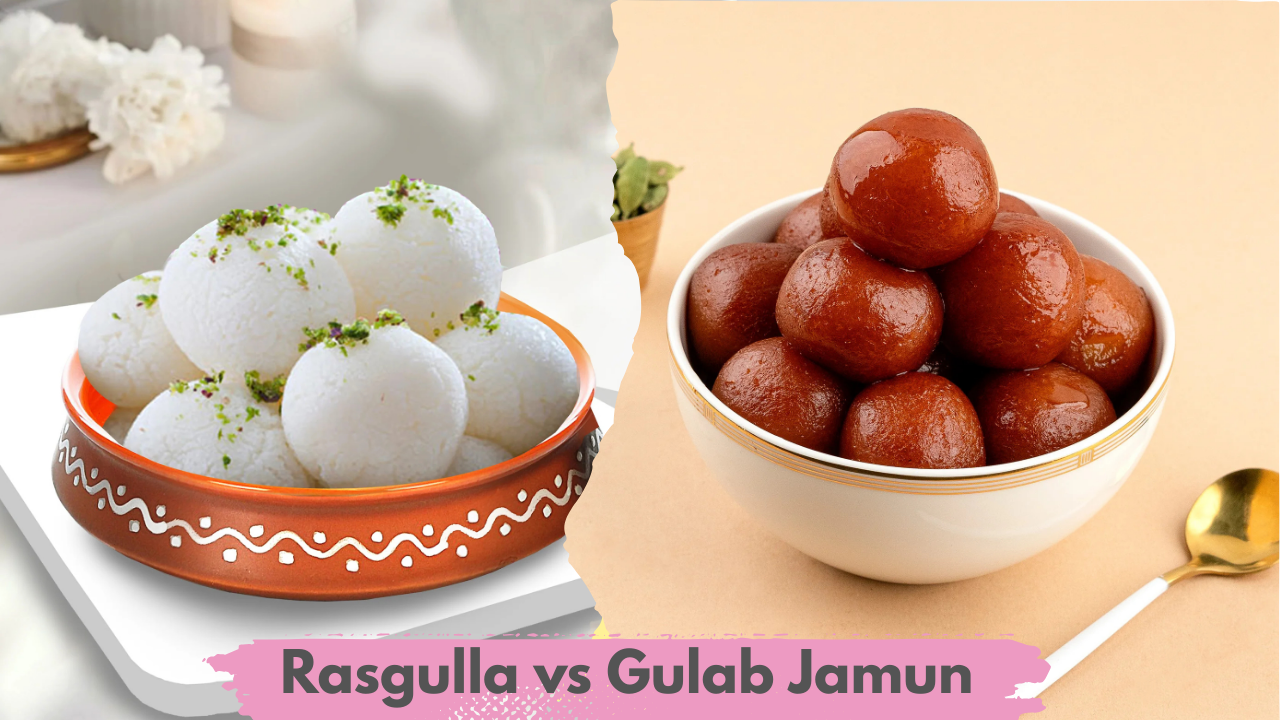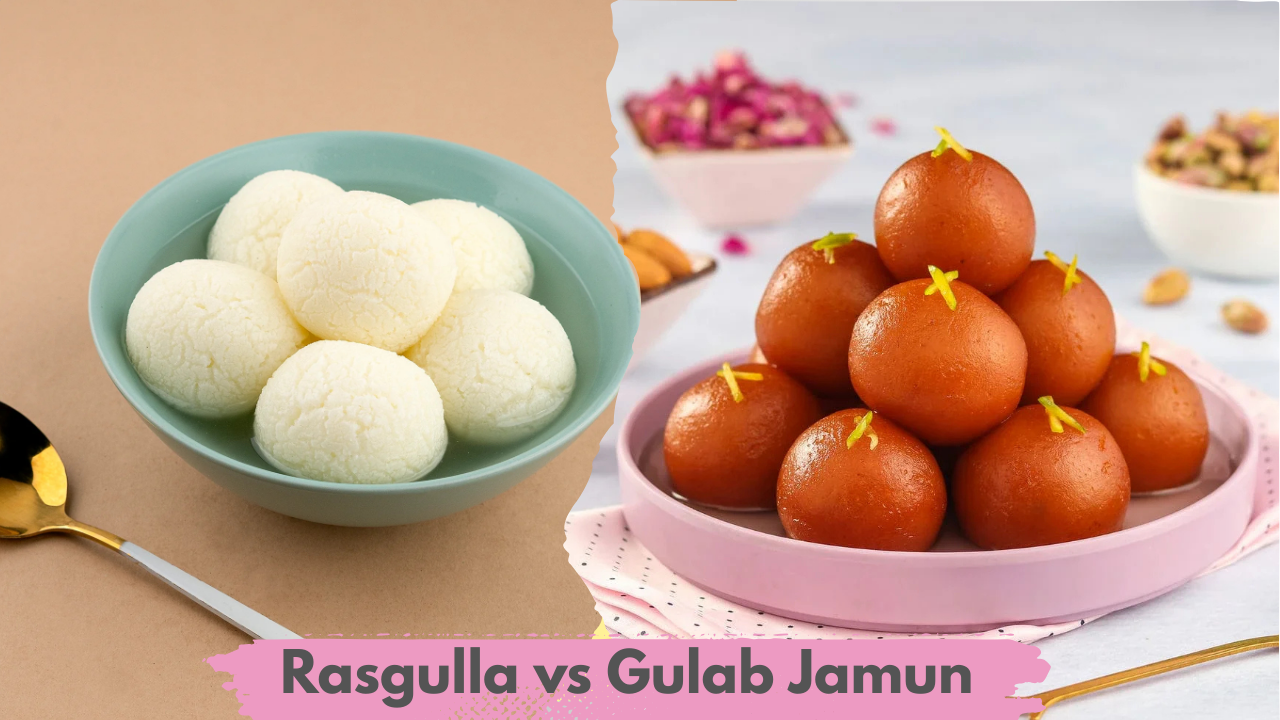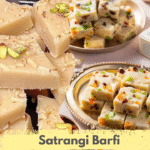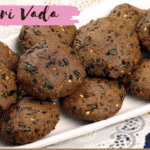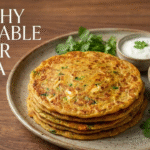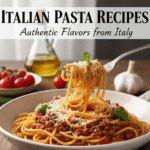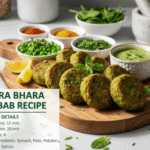The love story of India with candies is legendary. From road stables to royal festivals, no celebration feels completely without dripping in syrup. But if there is a debate that can mix both desserts and regional pride, is this: Rasgulla vs Gulab Jamun?
Both are soft, syrup immersed, dissolve the miracles in the mouth, but they are worlds aside, consistency and taste. One comes from the Bengal, airy and spongy like a sweet sponge ball, while the other is a real, rich, dense and fragrant noord -. Let’s go from Bengal to north of India and beat the ultimate confrontation.
Rasgulla’s cultural roots
The Rasgulla or the Rosogolla as Bengalen call it with love their origin on Odisha and the Western Bengal. In Bengal, it is not only a sweetness – it is an identity. The soft chhene balls (fresh curd cheese) are cooked in light sugar syrup until they dip the sweet and edible clouds.
When you go to a cute Bengal store, you will find these white or slightly cream balls in syrup shells and looks like pearls that are ready to be devoured.
The royal history of Gulab Jamun
On the other hand, Gulab Jamun is proud of northern India, although its roots are resting in the Persian kitchens and magnate. The name itself is poetic – Gulab means “pink” (rose water in its syrup), and Jamun is a fruit of shape and color as once fried.
These golden brown balls are made from Khoya (solid milk solid) or powdered milk and are perfectly fried before being soaked in a scented sugar syrup infused with cardamom and rose water. They are more dense, rich and the kind of sweet they eat slowly and appreciate each bit.
Texture: Cloud vs. FUDGE
See Rasgulla vs Gulab Jamun as a sponge: airy, inflatable and resilient. Press on it with the spoon and bouncer and release the syrup to each bite.
Gulab Jamun, on the other hand, looks more like a soft dark – ball – smooth, velvety and a little hard. It is the type of dessert that lingers in the mouth, covering it with a creamy aftertaste.
Levels of sweetness
Although both sugary pleasures are, Rasgulla vs Gulab Jamun syrup is lighter, making it easier to eat in larger quantities (and trust me, it is difficult to stop). The gulab jamun syrup is thicker, richer and often serves hot and gives it a more indulgent feeling.
The cooking method
Rasgulla: Made by kneading the chhene with a touch of semoline, in bullets and cooking in boiling sugar syrup. The timing is crucial – too long and they become as rubber; Too short and they disintegrate.
Gulab Jamun: Made from Khoya or powdered milk dough, in the shape of smooth balls, slowly fried over low heat, then soaked in hot and fragrant syrup. Patience is the key here – high heat burns the outside and has left the raw interior. When they are served
Rasgulla is often cooled, especially in summer, and makes it a refreshing dessert after a difficult meal.
Gulab Jamun seems in weddings and winter festivals, often hot with syrup or combined with vanilla ice cream for hot and cold pleasure.
Regional pride and rivalry
Things are interesting here. Bengalen violently protects the GI day (geographical indication) for its Rasgulla and claims it as its culinary invention, while Odisha has its own historical affirmation. Gulab Jamun does not trigger the same political drama, but each household in North Indian will proudly tell you that it is the best recipe. Nutritional perspective (if you dare to watch)
We are really – neither of the two is dietary foods. Both are rich in high level, a lot of sugar and have fun in moderation. Having said that, Rasgulla is usually slightly lighter because it is cooked, not cooked, while Gulab Jamun is fried and richer in fat.
Modern TURNES
Chef -chefs and Home Bakers have given a restyling to these classics:
Chocolate breedgulla with cocoa infusion chhena.
Rasgulla vs Gulab Jamun full of walnuts, saffron or even stuffed with cheesecakes. Fusion dessert such as Rasgulla Cheesecake or Gulab Jamun Trile for those who cannot choose one side.
Which wins?
To be honest? It depends on your mood. Do you want something light, juicy and refreshing? Rasgulla is your choice. Are you asking something rich, warm and decadent? Gulab Jamun calls for his name.
In the end, this is not really a question of competition – it is a question of celebrating the diversified sweet heritage of India, a syrupy bite.
Read More: Taste the Rainbow: Satrangi Barfi Recipe for a Sweet Atham
Conclusion
From the Rasgulla vs Gulab Jamun soaked by Bengal to the Golden Gulab Jamun of Northern India, these candies are proof of the diversity and Indian cuisine of the united Indian cuisine. They wear stories, traditions and emotions in every bite.
Whether you are the Rasgulla vs Gulab Jamun team, the Gulab Jamun team or the shameless team “both, the truth is simple: life is too short to choose only one.


